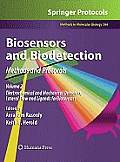 |
| image coutesy of powells.com |
An automatic and portable detector that takes just fifteen minutes to analyze a sample suspected of contamination with anthrax is being developed by researchers in the United States. The technology amplifies any anthrax DNA present in the sample and can reveal the presence of just forty microscopic cells of the deadly bacteria Bacillus anthracis.
B. anthracis, commonly known as anthrax, is a potentially lethal microbe that might be used intentionally to infect victims through contamination of food and water supplies, aerosolized particles, or even dried powders, such as those used in bioterrorist attacks in the United States in fall 2001. Detection is crucial to preventing widespread fatalities in the event of an anthrax attack.
The complexity of the microbe’s biology have so far made it difficult to build a portable system that can be employed quickly in the field. That said, there are several systems available that use PCR to amplify a particular component of the genetic material present in anthrax and then to flag this amplified signal. These systems are fast and sensitive but do not integrate sample preparation and so are not as convenient as a single detector unit would be. Full article
No comments:
Post a Comment